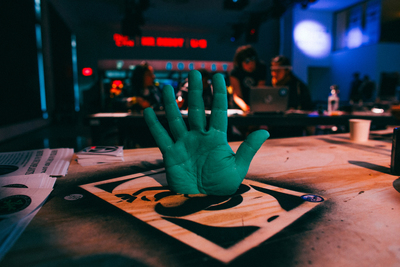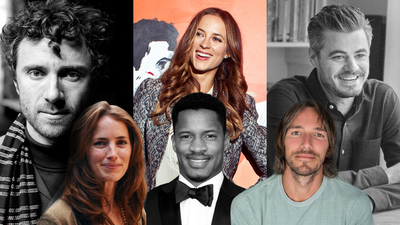
BY ZACHARY WIGON |
Racking Focus: Jean-Luc Godard and the Future of 3D
Cinema's longest-standing practitioner of innovation is still discovering new tricks.

Jean-Luc Godard one famously remarked - perhaps in response to one of the first movies ever made, the Lumiere Brothers' The Arrival of a Train at La Ciotat Station (1896) - that "the cinema is not the station; the cinema is the train." My interpretation of the remark, cryptic though it may be, is that for Godard, the meaning and beauty of the medium is in the manner in which it complicates and progresses, the way it moves forward, as is the case for any artistic medium. So it was with great pleasure that I saw Godard's Goodbye To Language at the New York Film Festival this past weekend.
Godard's use of 3D in Goodbye To Language is innovative enough to make it clear that there is a future for 3D cinema that bears only a passing resemblance to how 3D is usually used today.
At 83, one might expect Godard to - as so many older artists do - begin lapsing into patterns or resting in the tried-and-true forms that he's come to find comfort in. Nothing could be further from the true. Godard's revelatory new film is not only strikingly distinguished from anything I've ever seen him make before (though of course it does bear family resemblances to his other "late period" works), but it also marks a transformative use of 3D imagery, easily the most engaging and thoughtful use of the medium I've yet seen. Whereas so many (younger!) filmmakers are content to settle for 3D as, in effect, nothing but 2D with some added depth, Godard uses the medium in all kinds of playful ways - panning one camera while he keeps the other static, creating a stunning superimposition; changing perspective slightly so as to disorient the viewer; moving various objects from one plane of focus to another; and generally assaulting your senses so that you aren't quite sure what you're looking at, quite often.
Godard's use of 3D in Goodbye To Language is innovative enough to make it clear that there is a future for 3D cinema that bears only a passing resemblance to how 3D is usually used today. 3D has the potential to be not merely an added element to a film that is otherwise a traditional movie, but rather, the point of the filmgoing experience itself; oftentimes, in Goodbye To Language, I felt as if I was on an immersive amusement park ride of some sort, rather than watching a film - the journey is that transportive.
How long is it until VR headsets and perspective-shifting tricks in 3D format combine to give users "films" that are purely sensory in delivery, more about a visual/auditory stimulus than anything else?
As Virtual Reality headsets begin to get worked into how studios conceive of delivering content - something I've written about in this column before - I expect that disruptive uses of the 3D format, like the ones exhibited by Godard here, will become increasingly common. Godard has never been particularly interested in narrative, and with 3D he's capable of engineering a filmgoing experience that is relatively non-narrative; the experience of the film, rather than being about understanding what is happening, becomes about experiencing what is happening, like a theme park ride or, frankly, a drug experience.
How long is it until VR headsets and perspective-shifting tricks in 3D format combine to give users "films" that are purely sensory in delivery, more about a visual/auditory stimulus than anything else? I suspect, as VR quality improves and 3D becomes accessible in personal headsets, we'll begin to see a collision between cinema and visual art in the realm of the personal 3D headset, a kind of "movie" that, in effect, provides its user with a completely drug-free psychedelic trip. At Lincoln Center Saturday night, I didn't feel too far from exactly that.

